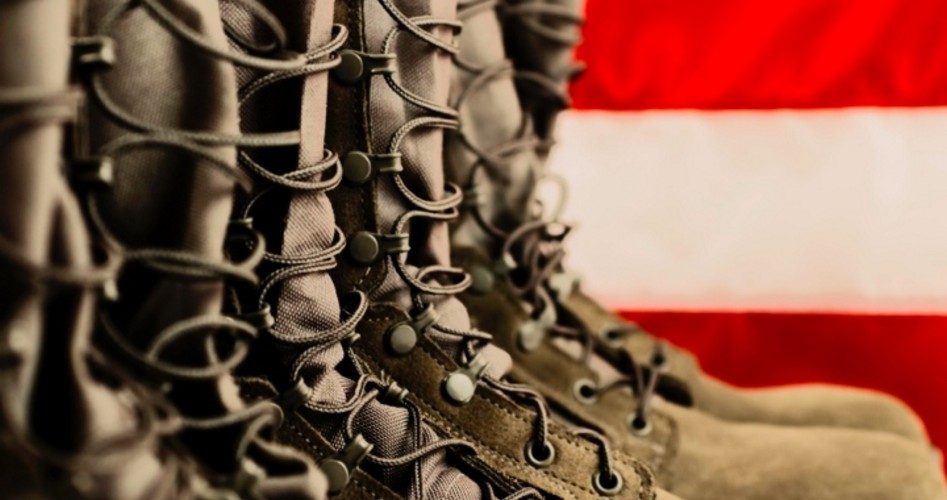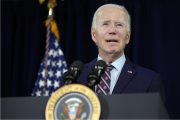
The United States has a reported military presence in at least 150 countries. Indeed, it could be said that the sun never sets on the American empire.
Some outposts of that empire are supposed to be kept secret, however, as they are operating in countries placed off limits by treaty or by U.S. law. Somalia is such a place, but that hasn’t stopped the U.S. Defense Department from setting up bases and deploying troops in that country.
In an exclusive report, Foreign Policy exposed an expansing military presence in the war-torn east African nation — a presence that is paying dividends to those that have to sign off on the operations.
“But the shadowy U.S. presence in this strategic port city [Kismayo] in war-torn southern Somalia has clear consequences for anyone with a share of power here. That includes Somali regional officials who are quick to praise American counterterrorism efforts, African Union forces who rely on U.S. intelligence as they battle back al-Shabab, and even the al Qaeda-linked militants themselves, who are increasingly hemmed in by a lethal combination of AU-led counterinsurgency, airstrikes, and raids by U.S. special operators,” the July 2 article claims.
For years, the Pentagon has claimed that drone attacks carried out in the region were launched from known bases in Djibouti, Kenya, or Ethiopia. The Foreign Policy piece proves that’s not always the case:
Based out of a fortress of fading green Hesco barriers at the ramshackle airport in Kismayo, a team of special operators from the Joint Special Operations Command, the elite U.S. military organization famous for killing Osama bin Laden, flies drones and carries out other counterterrorism activities, multiple Somali government and African Union sources have confirmed.
“They have a base over there,” Abdighani Abdi Jama, state minister for the presidency in the interim regional administration in Kismayo, said of U.S. forces, gesturing to a heavily fortified compound not far from the airport’s small terminal. He confirmed that as many as 40 U.S. military personnel are currently stationed in Kismayo, roughly 300 miles south of the capital of Mogadishu, where he said they operate drones from the airport’s single runway and carry out covert “intelligence” and “counterterrorism” operations.
“They have high tech; they have drones; they have so many things,” said Jama. “We are really benefiting.”
And that’s the way such surreptitious activities are arranged. You let us deploy special operations troops on your soil and let us launch drones from secret bases and we’ll make sure you are well compensated for your cooperation.
There’s at least one other secret U.S. installation in Somalia, according to the Foreign Policy article.
The report noted, “Somali government and AMISOM sources confirmed the existence of a second clandestine American cell in Baledogle, the site of an abandoned Cold War-era Air Force base in Somalia’s sun-blasted Lower Shabelle region.”
With all due respect to the impressive investigative reporting by Foreign Policy, it’s not as it they “broke” the story of the U.S. military’s Somali presence.
On July 24, 2012 the Washington Post published an article describing the congestion of the skies over Somalia caused by drone traffic. The situation is so bad, says the Post, that there is a “danger to air traffic” in the area.
An additional problem posed by the proliferation of the unmanned aircraft above the east African nation is that their presence might be evidence of a violation of a 1992 United Nations Security Council arms embargo still in effect.
The article in the Post cites a UN report in which officials of the international body recount several instances where collisions between drones and commercial aircraft or objects on the ground were “narrowly averted.” One such incident involved a drone and a passenger plane flying above Mogadishu, the capital of Somalia.
The authors of the report of the investigation did not directly implicate the United States.
That said, the report indicated that “at least two of the unmanned aircraft appeared to be U.S.-manufactured and suggested that Washington has been less than forthcoming about its drone operations in Somalia.”
According to the report, there have been 64 unauthorized drone deployments, fighter jet missions or attack helicopter flights recorded in Somalia since June 2011. At least 10 of the documented flights involved drones.
The use of Africa as a base and target for drone attacks is not exclusive to Somalia, however.
For example, on February 22, 2013 President Barack Obama sent a letter to the speaker of the House and the president pro tempore of the Senate, informing them that he ordered U.S. armed forces sent to Niger, where they will “provide support for intelligence collection and will also facilitate intelligence sharing with French forces conducting operations in Mali, and with other partners in the region.”
Accompanying the nearly 300 U.S. troops to Niger were two Raptor drones and the crew to pilot them, according to an NBC News story.
NBC reported at the time that Department of Defense officials verified the deployment of troops and drones, but assured NBC that the drones would be used “for surveillance only.”
Despite the comments made by the unnamed Pentagon officials, drones are not new to Niger.
Also in 2013, The New American covered a New York Times report that the Pentagon planned to build a drone base in northwest Africa to enable it keep a closer eye on African organizations believed to be associated with the larger al-Qaeda network.
U.S. intelligence officials insisted that the threat from regional al-Qaeda branches was growing and believe that more frequent surveillance can reduce the danger.
The move, the Times reported, is “an indication of the priority Africa has become in American antiterrorism efforts.” The story repeats the official position of the Pentagon that the current U.S. military presence is mostly confined to one permanent base in Djibouti.
Beyond the official base, the bases in Niger, and the two known Somali sites, the United States maintains a “constellation of small airstrips” in the area that are used to launch drones tasked with tracking the movements of suspected “militants.”
Whether to track and kill alleged al-Qaeda or al-Shabaab, the United States is making good on the plan announced in October 2012 to expand the drone fleet in Africa and make it the next theater in the War on Terror. The CIA, of course, will correspondingly increase its presence in North Africa and continue its conversion from an intelligence-gathering agency to a paramilitary force.
There is also evidence of boots on the ground, Foreign Policy reports:
A spokesman for the U.S. Special Operations Command, which handles public affairs for JSOC, referred Foreign Policy to the U.S. Africa Command (AFRICOM) for comment. AFRICOM spokesman Chuck Prichard, in turn, confirmed that a “small number” of U.S. personnel within AFRICOM’s area of responsibility are special operations forces, but declined to comment on the size or location of their units. He also declined to comment on whether or not they are responsible for operating drones, saying only that they “are not tasked with directly engaging enemy forces.”
“While we cannot provide exact details because of operational security issues, we can tell you [U.S. AFRICOM] has sent a limited number of trainers and advisors plus a small military coordination cell to support AMISOM and Somali security forces in international efforts to stabilize Somali,” Prichard wrote in an email to Foreign Policy.
In light of the lengthening American military footprint in Somalia and elsewhere, and the deadly drone attacks being launched from the secret African bases, it seems that the warning of James Madison needs to be remembered:
Of all the enemies to public liberty war is, perhaps, the most to be dreaded, because it comprises and develops the germ of every other…. No nation could preserve its freedom in the midst of continual warfare.


